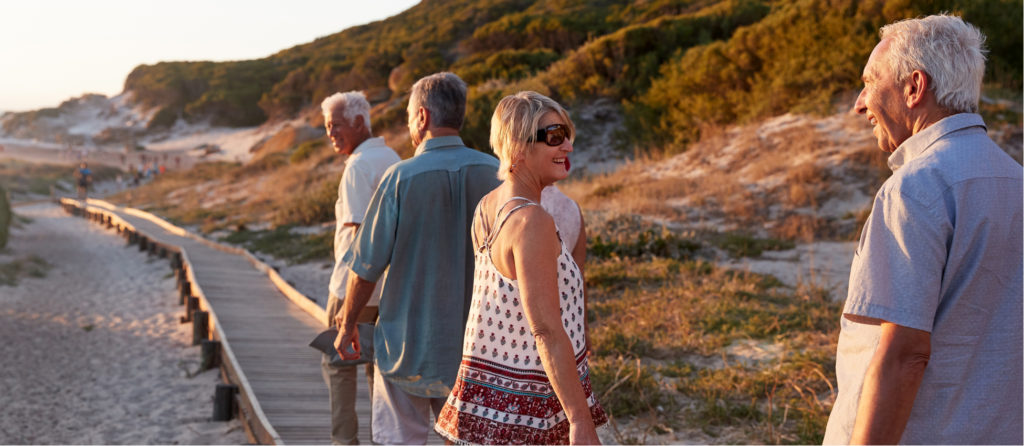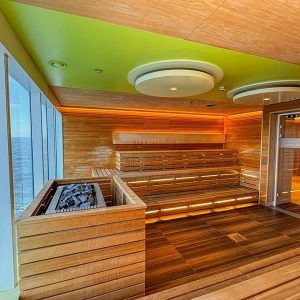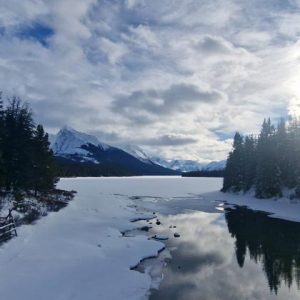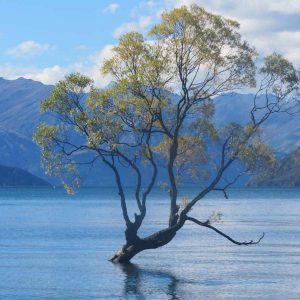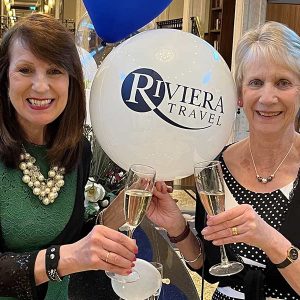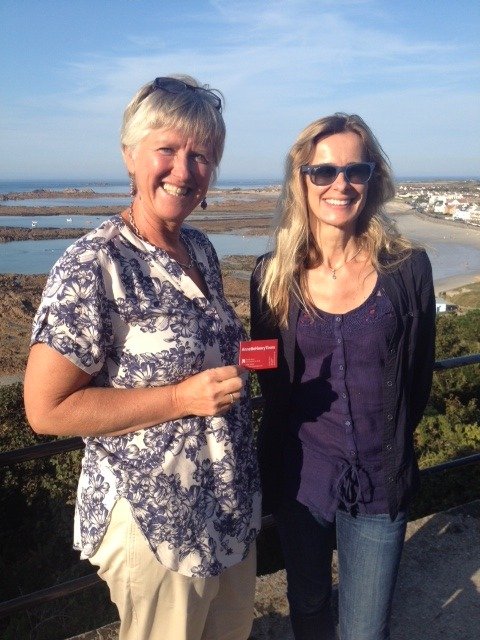 Guernsey is often referred to in the same breath as Jersey, but to do so is a mistake. Quite apart from the friendly (and sometimes not so friendly) rivalry between the two islands, Guernsey is a destination which has its own Government, its own piece of history and very much its own identity.
Guernsey is often referred to in the same breath as Jersey, but to do so is a mistake. Quite apart from the friendly (and sometimes not so friendly) rivalry between the two islands, Guernsey is a destination which has its own Government, its own piece of history and very much its own identity.
In fact there’s so much history on this small island that the only way to really experience it is to use the services of a local guide, and preferably one whose personal story brings that history to life.
Annette Henry is a grandmother, Gold accredited tour guide, local islander, and a walking talking encyclopaedia of knowledge and passion about her island. In three short hours we managed to learn so much about this small but resilient island as well as her own family story. In a nutshell, it’s all about the French and the Germans.
The French
A whistle stop tour back to the 10th century finds les Iles de Normande until the Battle of Hastings in 1066, when they became part of the combined realm of Normandy and England, from which the red and yellow flag was created. Fast forward to 1204 and King John lost Normandy, with the islanders forced into a decision as to where their allegiance lay. The two nations tried to woo the islanders, but it was the offer of better tax concessions and other local powers which swayed them to go with the English. As Annette recounted this story, it brought to my mind David Cameron sprinting north of the border ahead of the referendum to offer much the same kind of arrangement to the Scots.
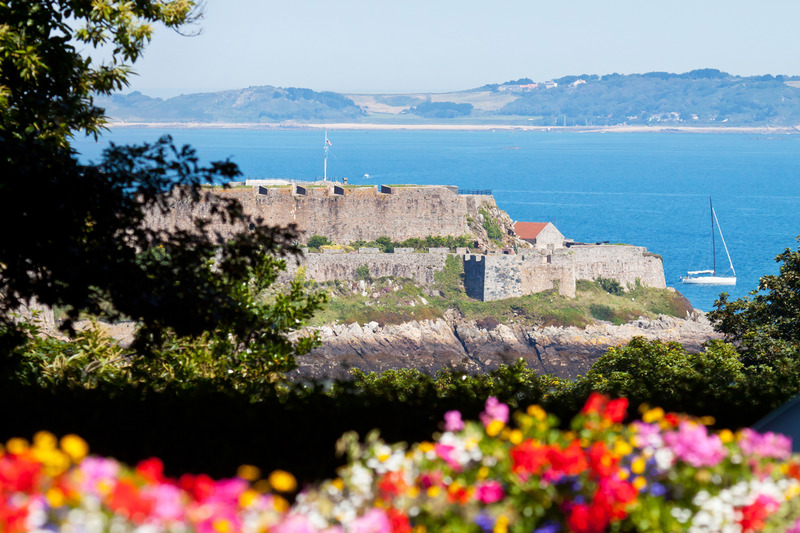 The French, none too happy with the rejection, began a war which lasted over 600 years with the newly created Channel Islands and the many fortifications and towers to keep the French at bay bear witness to this. Despite this, the island still feels a lot more French than English, and there’s a local French patois, both spoken and written which reminds you that the French coastline is but a few miles away, and a lot closer than England.
The French, none too happy with the rejection, began a war which lasted over 600 years with the newly created Channel Islands and the many fortifications and towers to keep the French at bay bear witness to this. Despite this, the island still feels a lot more French than English, and there’s a local French patois, both spoken and written which reminds you that the French coastline is but a few miles away, and a lot closer than England.
Geographically, there was also a divide and the original Guernsey (meaning Green Isle), was in fact two islands, north and south, until 1804 when Lieutenant Governor Doyle made the bold decision to protect the North Island from the invasion of the French by draining the water away between the two islands and reclaiming the land. He then built the structure of road networks that still exists today.
The Germans
The second huge influence which can be seen in almost every part of the island is German – when Churchill declared the Channel Islands to be an open town rather than to protect them, Annette explained that the islanders (including her own family) felt abandoned. Nonetheless the decision was made in Westminster and half of the population (20,000) were evacuated in just 2 days courtesy of English boats.
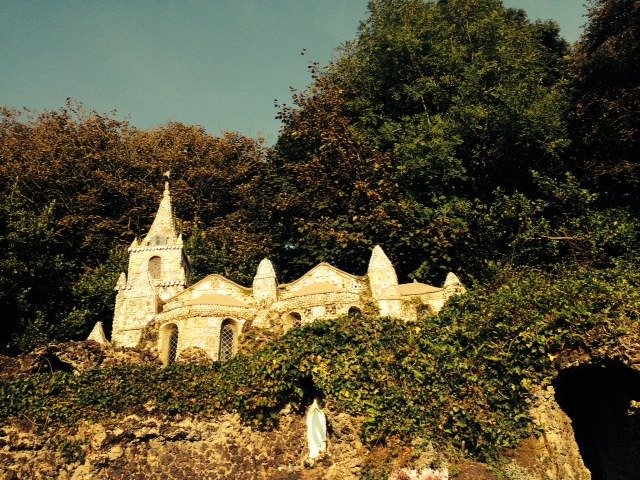 Without delay Hitler’s men arrived and took up residence with the islands becoming the most fortified part of the Atlantic Wall built by 35,000 foreign slave workers. What did these workers do? Well they built over 1000 bunkers, several hundred miles of underground tunnels and repositories, including a rather strange hospital, and planted 700 landmines, many on the 27 beautiful beaches. In short, Hitler ensured that the island became the most fortified part of his Atlantic Wall. There was no fighting though, and after 1945 most of the islanders returned to start again. Reading the Guernsey Literary & Potato Pie Club brings to life this period of occupation and is thoroughly recommended in advance of a visit. Indeed this one book has been responsible for a huge surge of visitors, including many Americans captivated by the tales of romance, daily life under occupation and hidden pigs!
Without delay Hitler’s men arrived and took up residence with the islands becoming the most fortified part of the Atlantic Wall built by 35,000 foreign slave workers. What did these workers do? Well they built over 1000 bunkers, several hundred miles of underground tunnels and repositories, including a rather strange hospital, and planted 700 landmines, many on the 27 beautiful beaches. In short, Hitler ensured that the island became the most fortified part of his Atlantic Wall. There was no fighting though, and after 1945 most of the islanders returned to start again. Reading the Guernsey Literary & Potato Pie Club brings to life this period of occupation and is thoroughly recommended in advance of a visit. Indeed this one book has been responsible for a huge surge of visitors, including many Americans captivated by the tales of romance, daily life under occupation and hidden pigs!
Fast forward to the 21st century, and today three quarters of the population work in financial institutions located mainly in the capital of St Peter Port which has a proliferation of important looking offices and industry. This has created a housing market not unlike the wealthier parts of the UK, and simple properties cost over £0.5m and multi-million pound residences are very much in evidence.
At the other end of spectrum can be found Hedge Veg and honesty boxes dotted around the island. Our guide Annette had sold over 400 cucumbers at 50p each last year – there may be huge deals being conducted by the men in suits just down the road, but this microcosm industry is doing very nicely.
Literary and artistic connections
These abound in Guernsey, from Moulins Huets where Renoir painted 15 works of art to the fishing port of Bordeaux where Victor Hugo wrote Les Travailleurs de la Mer. 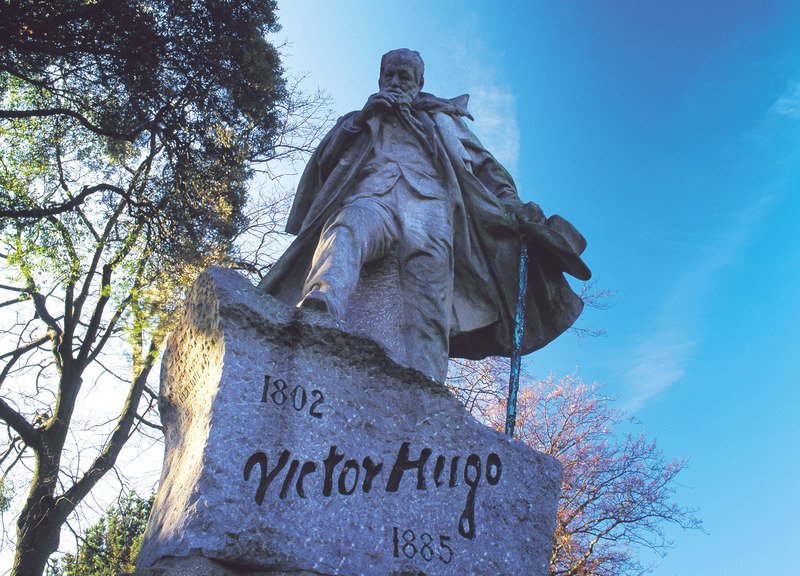 A must see in St Peter Port is Victor Hugo’s house – Hauteville House – where he lived for 15 years when exiled from Paris. What an eclectic and frankly weird collection of objects and somewhat kitsch design. And another most unusual attraction is the Little Chapel, decorated entirely from pieces of broken tiles including donations from Wedgwood. It’s a miniature replica of the Basilica in Lourdes, but a pure folly constructed from 1914 until 1945 and untouched by the Germans. I can imagine that they would not have had the faintest idea what to do with it.
A must see in St Peter Port is Victor Hugo’s house – Hauteville House – where he lived for 15 years when exiled from Paris. What an eclectic and frankly weird collection of objects and somewhat kitsch design. And another most unusual attraction is the Little Chapel, decorated entirely from pieces of broken tiles including donations from Wedgwood. It’s a miniature replica of the Basilica in Lourdes, but a pure folly constructed from 1914 until 1945 and untouched by the Germans. I can imagine that they would not have had the faintest idea what to do with it.
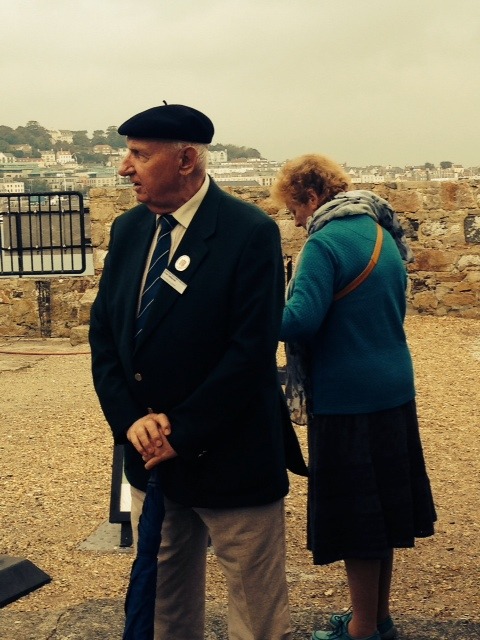 The final part of our tour was to Castle Cornet, and our guide here was the indomitable Fred Galliene who had a wealth of information about the history and just about every other subject as well. It’s a 12th century castle which has endured many centuries of protecting the island, including being under German occupation for 5 years. Somewhat ironically it lost its towers when hit by lightning and the ammunition stored therein caused their destruction.
The final part of our tour was to Castle Cornet, and our guide here was the indomitable Fred Galliene who had a wealth of information about the history and just about every other subject as well. It’s a 12th century castle which has endured many centuries of protecting the island, including being under German occupation for 5 years. Somewhat ironically it lost its towers when hit by lightning and the ammunition stored therein caused their destruction.
Fred was one of the very few children who remained on the island during WW2 as his mother refused to let him be evacuated, having already lost her husband. Hearing about his life first hand was fascinating –during the period when all food supplies to the island were cut off, he ate a lot of cabbage soup. At 12 noon each day the cannon is fired at Castle Cornet – a word of warning, it’s very loud, so stand back and put your fingers in your ears!
Time for Lunch!
A tour of Guernsey would not be complete without sampling some of the fresh seafood and local produce which makes this one of the gastronomic centres of Europe. And lunch at Village East overlooking the harbour front at St Peter Port made for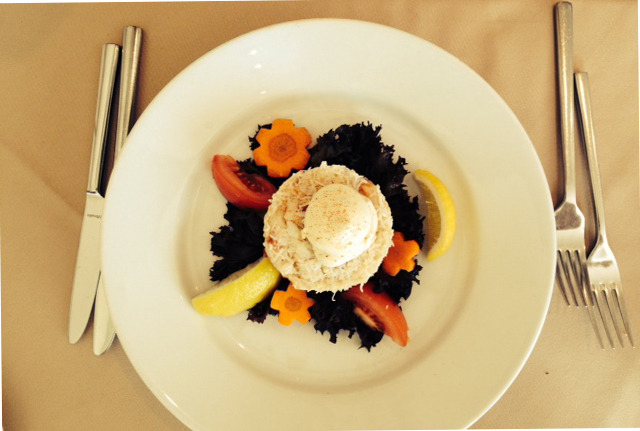 the perfect setting to enjoy a delicious lunch of mixed fish brochette served on its own mini-gallows, piping hot and drizzled with butter, as well as a seafood mould served with lime mayonnaise and wonderful bread.
the perfect setting to enjoy a delicious lunch of mixed fish brochette served on its own mini-gallows, piping hot and drizzled with butter, as well as a seafood mould served with lime mayonnaise and wonderful bread.
It was a time to reflect on this fascinating island with its extraordinary history. My advice, which could apply also to the lunch, is to savour Guernsey at leisure, don’t rush or think of it as a day trip. It’s worthy of your time and attention and you will leave feeling educated and enriched.
For more information see www.visitguernsey.com/home
